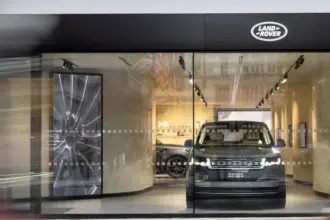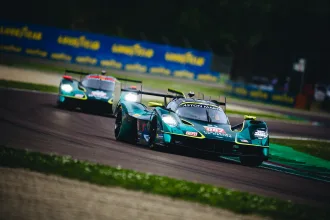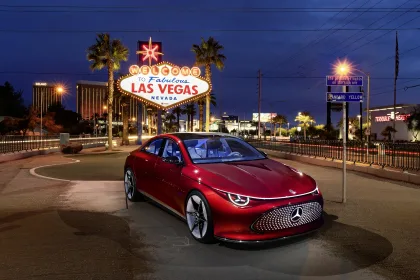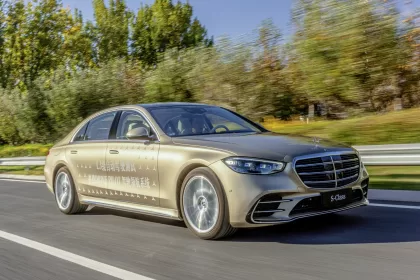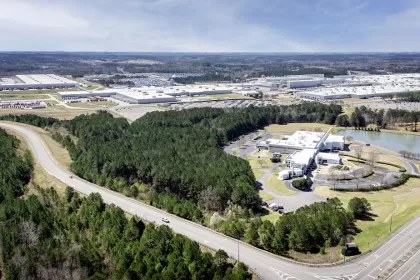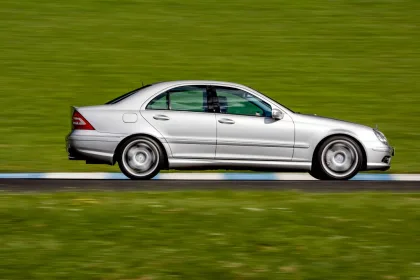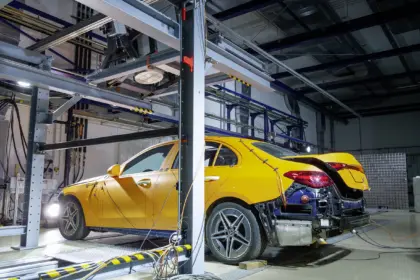- Aluminium with almost 70 per cent CO2-reduction compared with the European average and minimum of 25 per cent recycled content has passed the validation test for use in demanding structural cast components.
- Integration starting this year: Mercedes-Benz will integrate safety-relevant components made of low CO2 aluminium in large-scale production.
- Sustainable EV Ramp-up: EQS and EQE among the first models to be equipped with the CO2 reduced material.
- Responsible Sourcing: Mercedes-Benz is committed to the responsible sourcing standards of the Aluminium Stewardship Initiative.
After announcing the technology partnership with aluminium producer Hydro in December 2022, Mercedes-Benz presents first results of its low-carbon-technology roadmap. Following a successful testing phase of low carbon aluminium with a minimum 25 per cent share of post-consumer scrap, the company is bringing demanding structural cast components made of the more sustainable material into series production this year. The tested aluminium comes with a carbon footprint of just 2.8 kg CO2 per kg of aluminium.
“On our path to achieving a net carbon neutral vehicle fleet along the entire value chain by 2039, we are reaching the next milestone: Together with our strategic partner Hydro we are bringing low carbon aluminium into our series models as early as this summer. Thereby we are reducing the CO2 footprint of the aluminium by as much as 70 per cent compared with the European average. Among the first models to be equipped with the more sustainable material will be our EQS as well as the EQE.”
Markus Schäfer, Member of the Board of Management of Mercedes-Benz Group AG. Chief Technology Officer, Development & Procurement
Processing of low-CO2 aluminium for series models
Today, Hydro already supplies Mercedes-Benz with CO₂-reduced aluminium that comes from electrolysis powered by renewables. As a next milestone, Hydro will supply further, even more CO2-reduced aluminium to the foundry at the Mercedes-Benz plant Untertürkheim (Mettingen section). This material accounts for about 60 per cent of the total aluminium used of this alloy type in the Mettingen foundry and includes a post-consumer scrap content of at least 25 per cent. In Mettingen, the material is cast into sophisticated structural components for body-in-white applications. Among other parts, the material is being used for safety-relevant components, such as the shock towers for the models EQS, EQE, S-Class, E-Class, GLC and C-Class. Furthermore, the EQE will be equipped with longitudinal members made of low CO2 aluminium. Mercedes‑Benz also plans to use the material for various other parts such as the support frame for the electric powertrain of the upcoming vehicle platform MMA (Mercedes Modular Architecture).
Decarbonisation of the aluminium supply chain: Technology roadmap
The integration of the material into large-scale series production is the first proof point of the partnership between Mercedes-Benz and Hydro. Both partners agreed on a technology roadmap with the goal of reducing carbon emissions in the aluminium supply chains to a minimum. As part of the company’s Ambition 2039, Mercedes-Benz aims to integrate aluminium with a carbon footprint decreased by 90 per cent compared with the European average into its vehicles by 2030. Measures on this way include the use of CO2-optimised aluminium oxide and reductions of CO2 emissions resulting from the electrolysis process by using green electricity and innovative technologies.
At the same time, the partners are working on increasing the recycled material content. Within the next ten years, Mercedes-Benz aims to increase the share of secondary raw materials in its passenger car fleet to an average of 40 per cent.
Actively pursuing a responsible and sustainable supply chain
Mercedes-Benz is fully committed to the responsible sourcing of aluminium and will extend its use of materials certified from mine to supplier according to the standards of the Aluminium Stewardship Initiative (ASI). In addition, Mercedes-Benz and Hydro are jointly working towards transparent and inclusive processes, putting affected rightsholders at the centre. Low hurdles for participation for mining communities and indigenous peoples are key to effective human rights due diligence, including in certification schemes.

